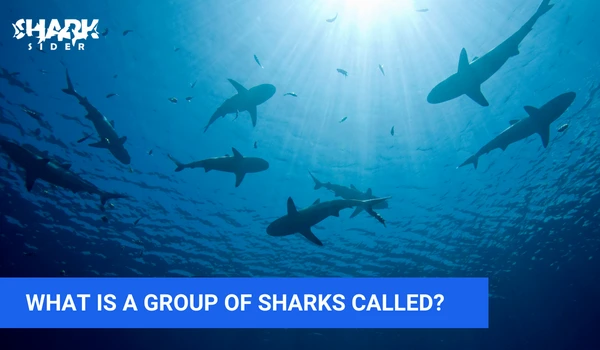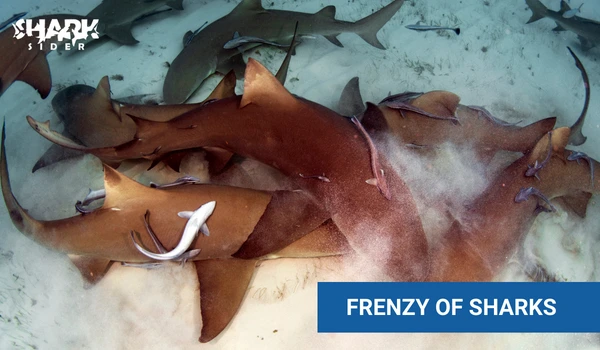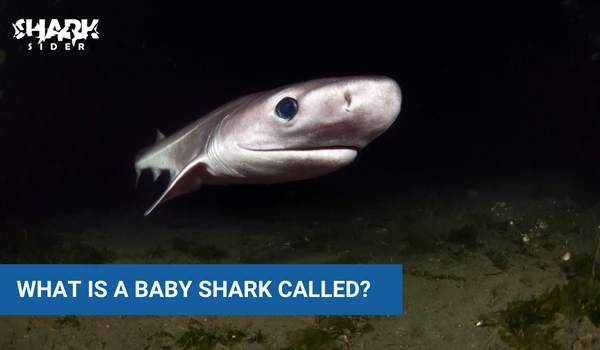Have you ever wondered about groups of sharks? Maybe you’re someone who loves to visit the beach, or perhaps you’ve seen some documentaries and noticed that there seemed to be more than one shark out in the open ocean. Whatever brought you here, today we’ll look into what is a group of sharks called!
We’ll explore how they live and why it’s so important for us to understand these beautiful creatures. When most people think of sharks, they only tend to see them as solitary hunters – however, the reality is much more complex than this. So let’s dive right in and discover what makes up a school or pod of sharks!

Are sharks social animals?
Yes, sharks are social animals! While they typically hunt alone, sharks will often gather in groups for protection and safety. They also form strong bonds with other sharks, and will often travel long distances to find a mate or group of friends.
What is a group of sharks called?
A group of sharks is called a school, shiver, or frenzy. In some cases, the term “herd” may also be used. A shiver is typically made up of sharks that are the same species, while a school can include different kinds of sharks. No matter what you choose to call them, it’s clear that these remarkable creatures play a vital role in our oceans and deserve our respect and protection!
Let’s take a more thorough look at the various collective nouns for sharks:
School of sharks
Sharks of the same species have a tendency to form large groups, known as schools or pods. These groups can vary in size from just a few individuals up to hundreds of sharks – and sometimes even more! The exact purpose for these aggregations is still largely unknown, but scientists think it could be related to feeding, mating, and social behavior.

One theory suggests that schooling is an adaptation that helps sharks find food more easily; by swimming together they create turbulence which can attract prey from greater distances. Schooling also allows them to communicate with each other quickly and efficiently while hunting, allowing them to identify potential dangers before it’s too late.
Schools of sharks are made up of both males and females but there are no defined hierarchies within them – they’re more of a cooperative effort. Younger sharks may be found closer to the center of the school while larger and older individuals tend to form the perimeter. This arrangement is thought to provide protection for the entire group, as well as a means of avoiding predators.
Not all species of sharks live in schools or pods; some prefer to hunt alone and others rarely travel in large groups. For example, Hammerhead Sharks are often seen swimming solo or in pairs, whereas Tiger Sharks can sometimes be observed hunting together in groups up to 50 strong!
Shiver of sharks
Another type of gathering is called a shiver. A shiver of sharks refers to smaller groups, usually composed of only two or three individuals. It’s unclear why these small clusters form, but some believe they could be related to mating behavior. Unlike a school, a shiver of sharks is usually made up of only one gender – either all males or all females.
Frenzy of sharks

When a group of sharks is particularly excited or active, it’s referred to as a frenzy. Frenzy behavior has been observed in all kinds of shark species, and usually occurs when there is a lot of prey around. During this time, the sharks will become very vocal, and frenzied hunting techniques are employed – often involving multiple individuals chasing down their target at once.
Herd of sharks
Finally, you may have heard the term “herd” used to refer to a group of sharks. This isn’t actually the correct terminology; a herd typically refers to mammals such as elephants, bison, and wildebeest. However, some people use the term “herd” when referring to larger groups of sharks (generally more than 10 individuals).
What was the first shark’s name?
The first shark to be officially described and named was Squalus Acanthias, commonly known as the spiny dogfish. This species is found in temperate waters throughout the world and can grow up to three feet in length. It’s believed that this species evolved around 200 million years ago!
What did sharks use to be called?
Sharks used to be called “Sea Dogs” due to their resemblance to canines and the fact that they were often found around ships. The earliest example of a shark-like animal being named in such a manner came when English writer Richard Hakluyt referred to a sea dog as a “sharke” in 1599. Since then, countless species of sharks have evolved, each taking on its own name and garnering attention from scientists and wildlife enthusiasts alike.
While no one knows the exact name of the first shark, we can be sure that the Sea Dog was among the earliest descriptors used to reference these incredible creatures.
The term was still in use during the 18th and 19th centuries but eventually fell out of favor with the rise of modern shark science. In the 20th century, sharks began to be referred to by their correct scientific name – Selachimorpha.
Are there any other collective nouns used to describe sharks?
Yes. Other collective nouns that are used to describe groups of sharks include a “battery” (a group of rays or skates), a “gam” (a small congregation of sharks), and a “sleuth” (a group of larger species such as the great white shark). Additionally, some people use more poetic terms such as a “cloud,” an “army,” or even a “parade” when referring to large gatherings of these amazing predators.
Are there any rarer types of shark aggregations?
Yes, there are some rarer types of shark aggregations that have only been observed in certain regions. For example, in the Indian Ocean off of South Africa, hundreds of Whale sharks (the largest species of fish in the world) gather to feed on plankton. It’s believed that this phenomenon occurs due to upwelling currents along the continental shelf, which bring nutrient-rich water and food sources to the area.
Another rare behavior has been observed in Caribbean Reef Sharks, which sometimes form massive circling patterns while swimming together – although the purpose of this behavior is still unknown.
What is a baby shark called?

A baby shark is called a pup. Pups are born fully developed and ready to begin their independent life in the ocean. They tend to be smaller than adult sharks, but can still grow to impressive sizes – some pups may reach lengths of up to three feet after one year! As such, it’s important for them to be cautious when encountering larger predators such as other sharks or large fish. To stay safe, they often swim close together in nursery schools as they explore their new environment.
What is the name of a group of baby sharks?
A group of baby sharks is referred to as a “wriggle” or a “nursery”. A wriggle consists of hundreds, if not thousands, of newborns that flock together in shallow coastal waters for protection from predators. These nurseries also offer an ideal food source for these freshly born pups. It’s remarkable how young sharks have been seen wiggling along in single-file lines when they explore deeper oceans!
Conclusion
Ultimately, sharks are extraordinary beasts with an array of talents and characteristics. A pack or kitting of sharks can be called various terms that vary depending on the species and quantity in attendance. The most common labels to use include school, shiver, frenzy, and herd – although some people opt for more whimsical titles!
Regardless of what we call them; Sharks keep fascinating us all every day!
